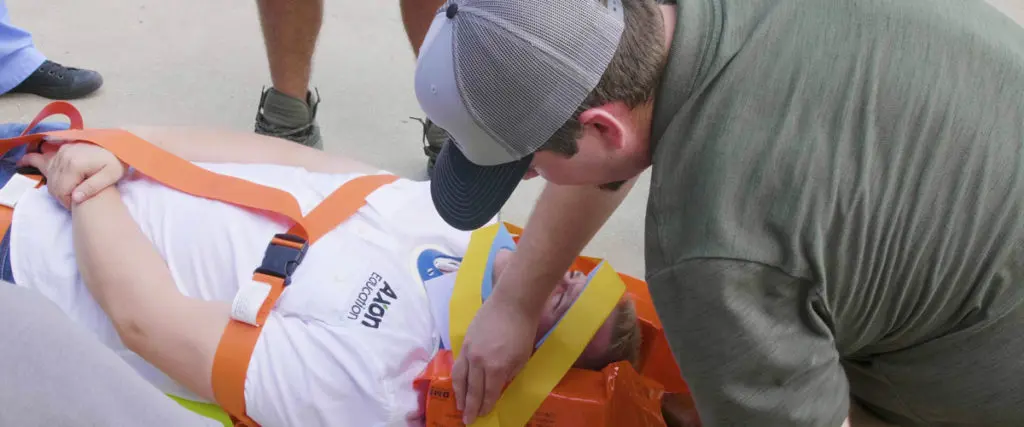Introduction
Are you passionate about helping others in times of crisis? Do you thrive in high-pressure situations and possess a strong sense of empathy? If so, a career in emergency medical services (EMS) might be the perfect fit for you. With the right education and training, you can embark on an exciting career that allows you to make a difference in people's lives every day.
What is Emergency Medical Services Education?
Emergency Medical Services Education refers to the specialized training and education required to become a certified paramedic or emergency medical technician (EMT). These professionals play a crucial role in providing immediate medical care to individuals who are ill or injured in emergency situations.
Paramedic Training: A Pathway to Excellence
If you aspire to take on a leadership role in emergency medical services, paramedic training is the way to go. Paramedics are highly skilled professionals who are trained to provide advanced life support and critical care interventions. They are often the first responders at the scene of emergencies, making split-second decisions that can mean the difference between life and death.
Why Choose Paramedic Training?
- Comprehensive Curriculum: Paramedic training programs offer a comprehensive curriculum that covers topics such as anatomy, physiology, pharmacology, trauma management, and advanced cardiac life support. Hands-on Experience: Paramedic students gain extensive hands-on experience through clinical rotations and field internships, allowing them to apply their knowledge in real-world settings. Career Advancement Opportunities: Becoming a paramedic opens up doors for career advancement within the EMS field. Paramedics can pursue roles such as flight paramedics, critical care paramedics, or even EMS instructors.
Basic EMS Education: The Foundation of Emergency Care
For those looking to start their journey in emergency medical services, basic EMS education provides the necessary foundation. Basic EMS courses typically focus on fundamental skills and knowledge needed to provide basic life support and stabilize patients until more advanced medical care is available.
Texas EMS School: Your Gateway to Basic EMS Education
If you're located in Texas and eager to kickstart your career in emergency medical services, look no further than the renowned Texas EMS School. With a reputation for excellence, this institution offers top-notch basic EMS education that prepares students for entry-level positions in the field.
Online EMS Training Courses: Convenience and Flexibility
Texas EMS School also offers online EMS training courses, providing students with the convenience and flexibility to learn at their own pace. These courses are designed to accommodate individuals with busy schedules or those who prefer a more self-directed learning approach.
Traditional Face-to-Face EMS Courses: The Power of Personal Interaction
While online courses offer convenience, Medical some students thrive in a traditional face-to-face learning environment. Traditional EMS courses provide the opportunity for direct interaction with instructors and fellow classmates, fostering a sense of camaraderie and collaboration.
The Benefits of Traditional Face-to-Face EMS Courses
- Immediate Feedback: In-person instruction allows for immediate feedback from instructors, ensuring that students grasp concepts effectively. Hands-on Practice: Traditional courses often involve hands-on practice sessions, enabling students to develop practical skills under the guidance of experienced professionals. Networking Opportunities: Interacting with classmates and instructors opens doors to valuable networking opportunities within the EMS community.
Emergency Medical Technician Program: Building a Strong Foundation
The Emergency Medical Technician (EMT) program serves as an entry point into the world of emergency medical services. EMTs are trained to provide basic life support and assist paramedics in more complex medical situations.
What Does an EMT Program Entail?
An EMT program typically covers topics such as patient assessment, airway management, cardiopulmonary resuscitation (CPR), and basic medical procedures. It combines classroom instruction with hands-on training to ensure that students develop the skills necessary to provide immediate care in emergency situations.
FAQs
1. How long does it take to complete paramedic training? Paramedic training programs can vary in length, but they typically range from 12 to 24 months, depending on the program and the student's prior education and experience.

2. Are there any prerequisites for enrolling in a paramedic training program? Prerequisites can vary between programs, but most require students to have a high school diploma or equivalent and be at least 18 years old. Some programs may also require completion of basic EMT training before enrolling.
3. Can I work as an EMT while pursuing paramedic training? Yes, many students choose to work as EMTs while pursuing their paramedic training. This allows them to gain valuable experience in the field while furthering their education.
4. Is financial aid available for EMS education programs? Yes, financial aid options are often available for EMS education programs. Students can explore scholarships, grants, and student loans to help cover the cost of tuition and other expenses.
5. Are there opportunities for career advancement within the EMS field? Absolutely! The EMS field offers numerous opportunities for career advancement. Paramedics can pursue specialized roles such as flight paramedics, critical care paramedics, EMS instructors, or even transition into management positions within healthcare organizations.
6. How do I maintain my certification as a paramedic or EMT? Certification requirements vary by state, but most paramedics and EMTs are required to renew their certification every two to three years. This typically involves completing continuing education credits and demonstrating competency through skills assessments.
Conclusion
Embarking on a career with emergency medical services education opens up a world of possibilities. Whether you choose to become a paramedic or start as an EMT, each step you take brings you closer to making a significant impact on people's lives in their time of need. With the right education, training, and dedication, you can be part of a profession that saves lives and provides essential care to those in crisis. So why wait? Start your journey today and embark on an exciting career with emergency medical services education.
Remember, the road may be challenging, but the rewards are immeasurable. Take the first step towards your future and make a difference in the world of emergency medical services. Embark on an exciting career with emergency medical services education today!
